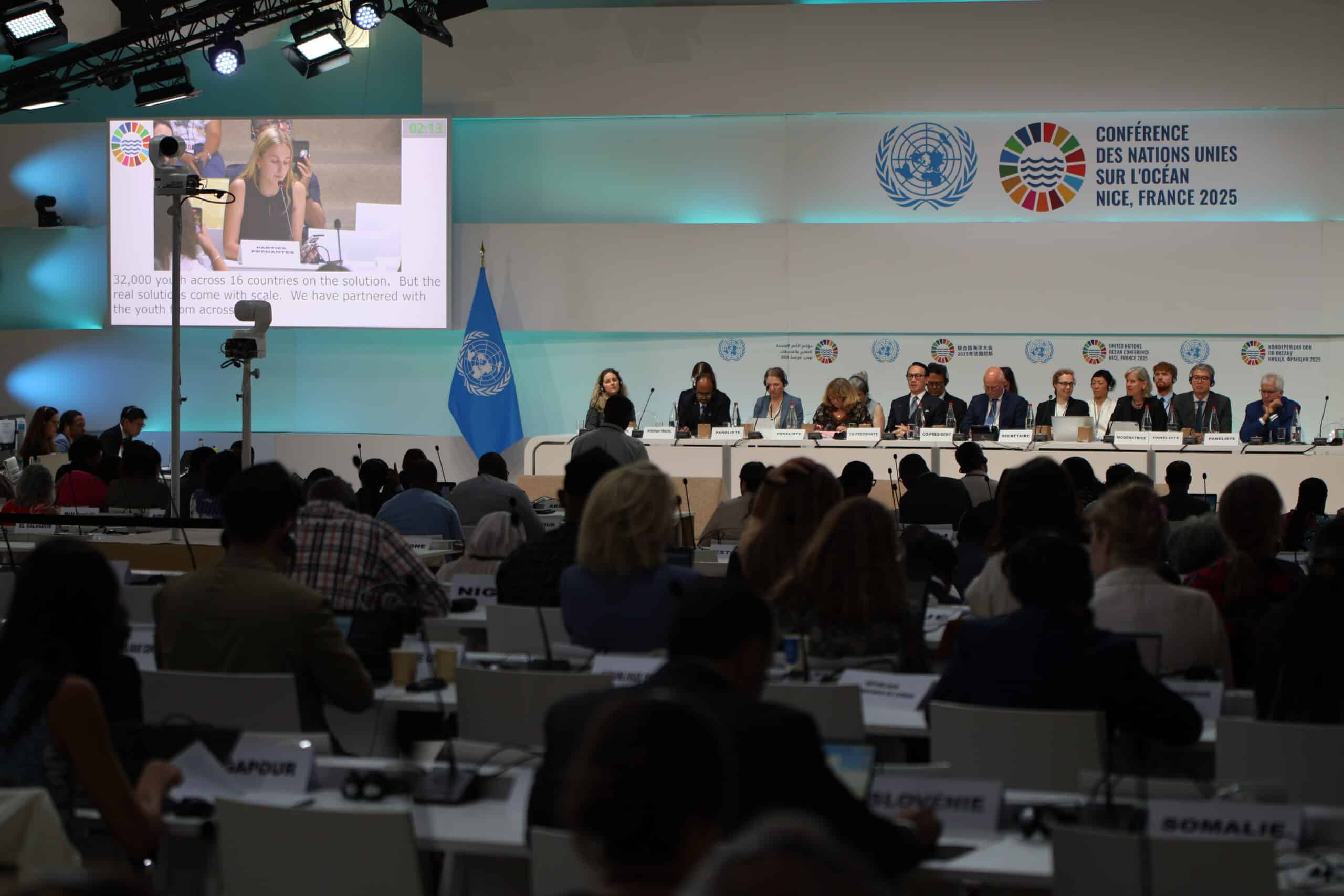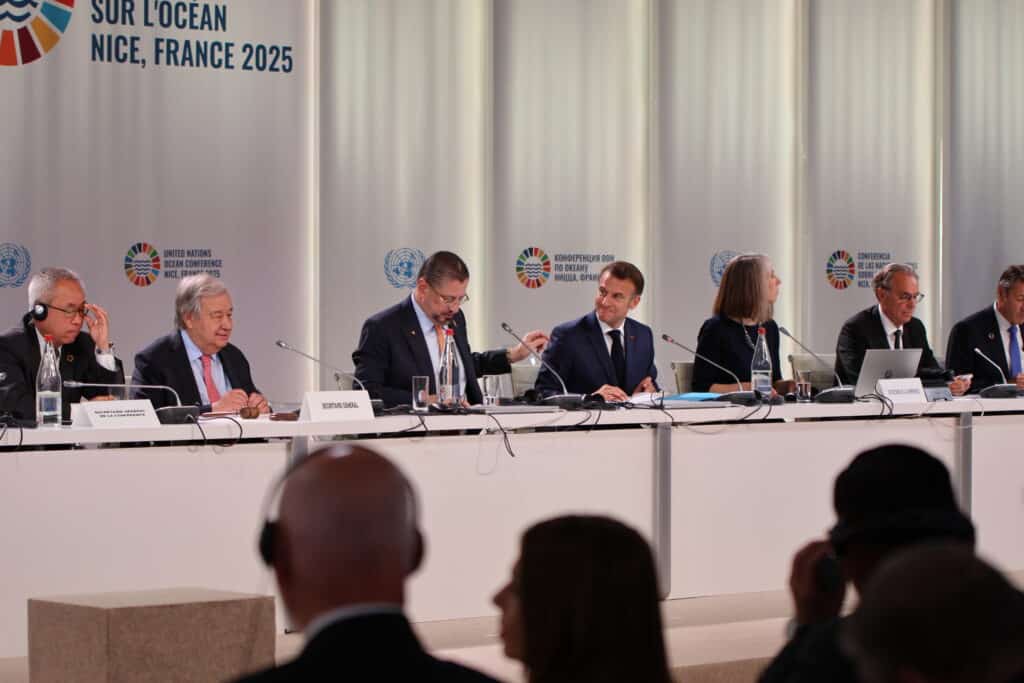What the UN Ocean Conference Means for Our Sharks
After more than 20 years working in the fisheries conservation and management space, I’ve witnessed firsthand how global policy decisions can ripple through our regulatory institutions as well as ocean ecosystems. The recent Third United Nations Ocean Conference (UNOC3) in Nice, France, represents another important step toward a planet-wide approach to address some of the most pressing challenges facing our oceans. This year’s conference covered a variety of issues ranging from establishment of Marine Protected Areas (MPAs) to addressing underwater noise, but, while those issues are important, we remain focused on our goal to conserve threatened shark and ray species.
The gathering of world leaders delivered some modest meaningful progress for shark and ray conservation, though lofty statements and commitments only get you so far. We’ve still got significant work ahead if we expect to turn the tide on the decline of shark and ray species globally.

A Win for Ocean Predators?
A hopeful glimmer came when nine countries (including France, Australia, Ecuador, Maldives, Malta, Panama, Republic of Congo, Spain and UK) joined the Global Coalition to Halt the Extinction of Threatened Sharks and Rays. More than 35% of global shark and ray species are threatened with extinction. Unfortunately, despite the precarious state of shark and ray populations in many places, they remain targeted for the meat and fin trade as well as remain critical bycatch concerns in many fishing operations. More importantly, a growing body of scientific evidence suggests that healthy shark and ray populations represent key indicators and essential components of healthy marine ecosystems.
This coalition recognizes that predators like sharks are “not only vital to marine biodiversity but also to carbon cycling and ocean resilience.” It’s encouraging to see governments acknowledge what those of us working in fisheries management have long understood: protecting predators isn’t just about conservation for those creatures’ sake‚ it’s about maintaining the whole of the ecosystem that supports sustainable fisheries and a healthy ocean. Nonetheless, commitments are one thing, actually taking action is another thing entirely and that will only happen at the regional and national level. It remains to be seen how this commitment will translate to on-the-water impact through regulatory requirements and appropriate enforcement.
Tackling the Ghost Gear Crisis
One of the most practical outcomes was the focus on abandoned, lost, or otherwise discarded fishing gear‚ what is often called “ghost gear.” The declaration encourages international organizations, particularly the UN Food and Agriculture Organization (FAO), to address this issue and its impact on habitats and marine species.
Everyone has seen the images of sharks, rays, and other species caught in abandoned nets and discarded longlines. This equipment doesn’t stop fishing just because it’s been lost, it continues to trap and kill marine life indiscriminately while also contributing to the marine pollution crisis. Addressing ghost gear represents a win-win solution that benefits both marine species and reduces the plastic trash that ultimately erodes down to microplastics that end up inside fish and, ultimately, inside us.
 Missed Opportunities on Bycatch Reduction
Missed Opportunities on Bycatch Reduction
While the Nice declaration acknowledged perennial challenges like overfishing and illegal fishing, it failed to get specific about the fishing practices that continue to negatively impact shark and ray populations. The declaration falls short of directly addressing high bycatch levels, non-selective gear, and other fishing methods that have received decades of sustained effort toward reform across various regional and national authorities. We know what techniques can reduce shark and ray mortality across fisheries, such as the use of circle hooks, proper handling and release protocols, time-area closures during known spawning‚ et cetera, but the political will to mandate these practices remains frustratingly weak and would benefit from a clear, globally agreed position and recommendation.
Additionally, while researchers have made significant strides in identifying and developing more humane catch and handling techniques that also happen to improve survival rates for released bycatch, few regional authorities have adopted those techniques beyond voluntary guidelines. These techniques represent practical operational approaches that could save thousands of sharks and rays annually and, subsequently, substantially improve overall ecosystem health in favour of more productive fisheries.
The Broader Context: Ecosystem-Based Management
What remains most striking about the Nice outcomes is how they reflect the ongoing challenge of moving from single-species management to true ecosystem-based approaches. The declaration neglects to recognize the role of marine species in climate mitigation, despite growing scientific consensus that, particularly, large predators like sharks and rays are vital in carbon sequestration and ecosystem regulation.
Healthy shark populations are indicators of healthy reef systems and fisheries. When we protect predators, we’re investing in the long-term sustainability of the commercial fisheries that depend on balanced marine ecosystems.
Progress on High Seas Governance
The push toward ratifying the High Seas Treaty represents exactly the kind of governance structure we need for highly migratory species like tuna, sharks, and rays. With fifty countries having ratified the Biodiversity Beyond National Jurisdiction (BBNJ) agreement and 17 more reportedly underway, we’re close to the 60 needed for entry into force, possibly by January 2026.
This treaty could provide the regulatory framework for better managing bycatch in international waters beyond the reach of the 200 nautical mile zone of each country established by the UN Convention on the Law of the Sea (UNCLOS)‚ something that’s been a persistent challenge across regional and national authorities. This would represent a significant step toward securing accountability of fishing vessels operating under minimal oversight and without scrutiny on the high seas.
Moving Forward
The Nice conference represents incremental progress and should be cause for optimism. At least we are collectively discussing these important issues at a high level of authority and influence. However, as so many of these global convocations do, there was a lot of talk that included “commitments” and “promises,” but rhetoric and platitudes only get you so far. Real, substantive, and lasting change will only happen through consistent implementation of practical, substantive, and enforceable measures. We need regional and national authorities to adopt stronger bycatch reduction regulations, fishing fleets to embrace proven mitigation techniques, and markets and consumers to support sustainably caught seafood.
The tools and procedures already exist. They’ve been developed across decades of research and industry collaboration. What we need now is the political will to require and implement them consistently across all fishing operations, not just have them available as arbitrary voluntary guidelines or simple best practice suggestions in a document that sits on a shelf collecting dust.
At the end of the day, the ocean doesn’t care about our conferences and declarations the same as fish don’t care what lines we draw on our maps. The ocean responds to what we actually do on the water, vessel by vessel, fishing operation by fishing operation. Nice gave us some useful policy momentum and a beacon in the distance, but the real work happens in the unglamorous and messy world of fisheries regulation and compliance before the government authorities and industry adoption of best practices.





